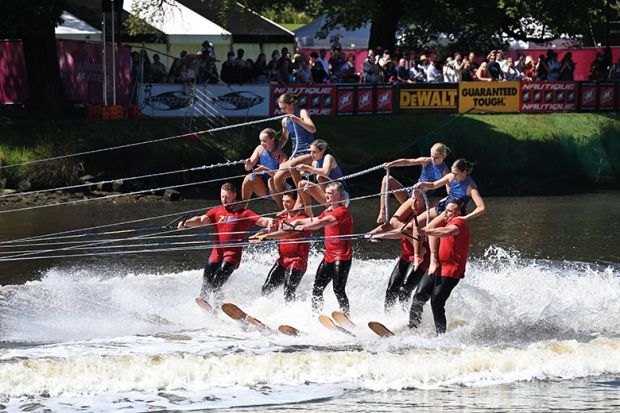A gender quota for some of Australia’s most prestigious medical research grants has split academics, with many hailing a long-overdue move to inject equity into senior ranks while others accuse the funder of kowtowing to demands detrimental to women and men alike.
From next year, the National Health and Medical Research Council (NHMRC) will ensure that allocations in the leadership categories of its flagship Investigator Grants are split evenly among men and women. Equal numbers of grants will be awarded by gender, and a support package component of the grants will be standardised to A$400,000 (£223,000) so that money is also distributed more or less evenly.
The council says this will rectify a glaring imbalance particularly in the most senior “leadership 3” (L3) category of the grants, ensuring that women are “funded at later career stages in sufficient numbers to be visible”. The new arrangement, which resembles the demands laid out a year ago in a change.org petition, will make it “attractive” for research institutions to recruit and retain women.
Analysis suggests that male researchers at L3 level have attracted about four times as much funding as their female counterparts in recent years, and at least twice as much as either male or female researchers in all four less senior categories. “Do you really think that this is sustainable for the future of Australian biomedical researchers?” tweeted a Melbourne biologist, who declined Times Higher Education’s request for comment.
But critics say success rates for male and female applicants are roughly the same, and the problem is that far more men apply for the most senior grants. Equal funding can only be achieved by more than doubling success rates for women while almost halving them for men.
Chris Lloyd, professor of business statistics at the University of Melbourne, said that the NHMRC had not taken account of factors that contributed to female researchers’ curtailed careers, such as parental status. The council was awarding an “affirmative grant” to “women who may not have children or may be rich enough to afford a full-time nanny”, he said.
Professor Lloyd said the council had based its decision on “polemic” and had not considered the option of “waiting for more females to wash through the system”. Instead, it had been “driven by an outrage mob who signed a petition”.
But the NHMRC said parental status was “only one factor” contributing to systemic disadvantage, and the council already had a “relative to opportunity policy” which allowed applicants to account for career disruptions.
University of Queensland neurobiologist Thomas Burne said the lack of very senior female researchers was a longstanding problem that had proved largely impervious to past interventions. At the same time, inadequate funding for basic medical research meant that proposals awarded the best possible ratings by peer reviewers could not get funded, and researchers of both genders left Australia as a result.
Professor Burne said the NHMRC was moving quickly to address the first problem while overlooking the second, risking even worse brain drain. “If you have 80 men and 20 women apply at L3 level, all 20 women will be successful while 60 of the 80 men – senior researchers and clinicians in their fields – will miss out.
“Meanwhile the women who get promoted to the top level will get dragged on to every committee and absolutely hammered with incredible workloads, because there aren’t enough women there.”
Register to continue
Why register?
- Registration is free and only takes a moment
- Once registered, you can read 3 articles a month
- Sign up for our newsletter
Subscribe
Or subscribe for unlimited access to:
- Unlimited access to news, views, insights & reviews
- Digital editions
- Digital access to THE’s university and college rankings analysis
Already registered or a current subscriber? Login










